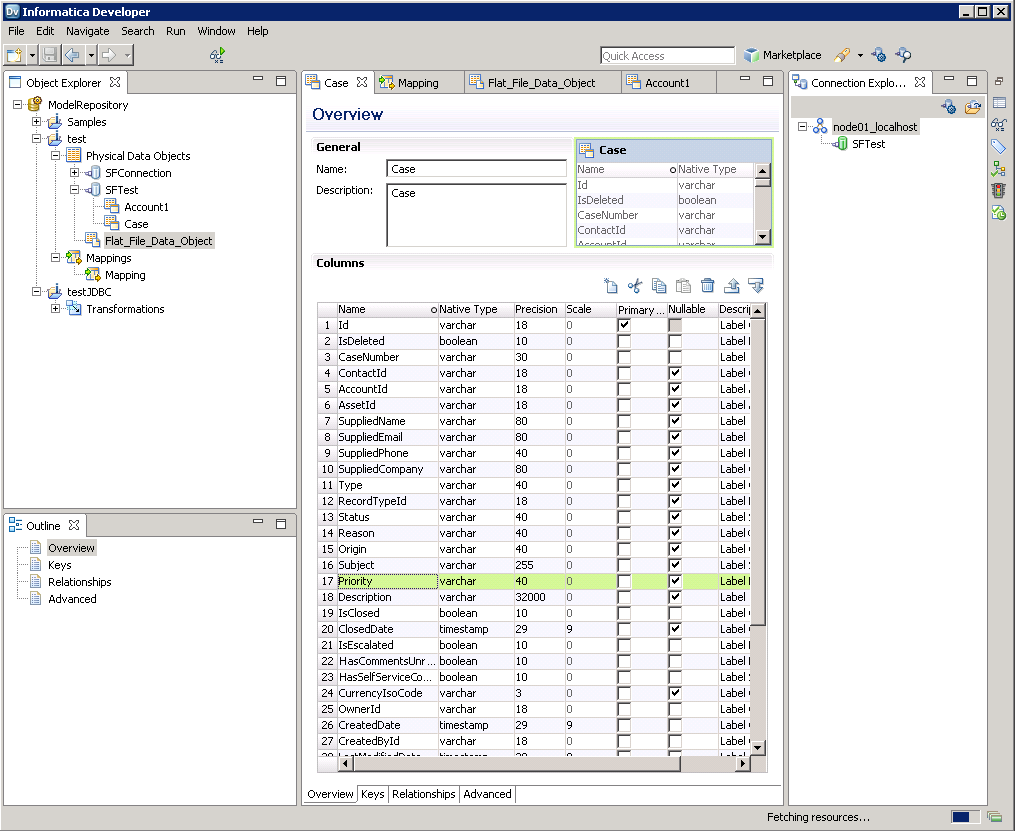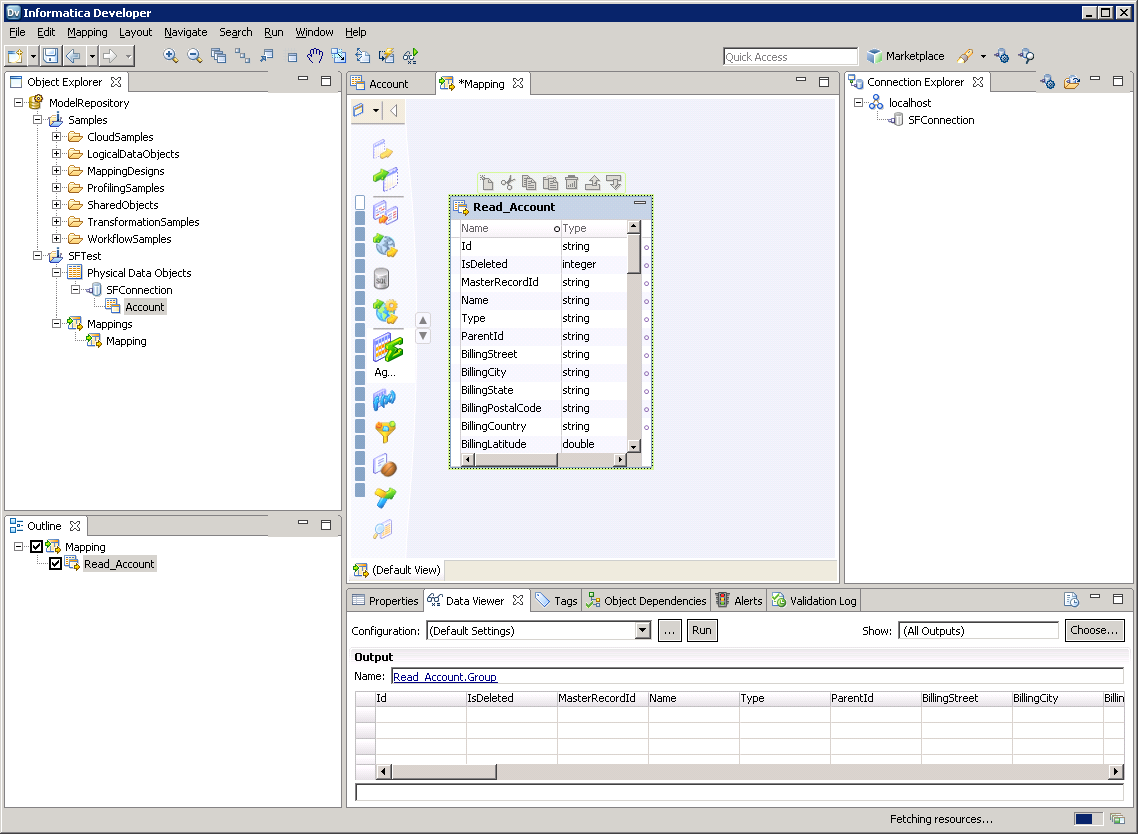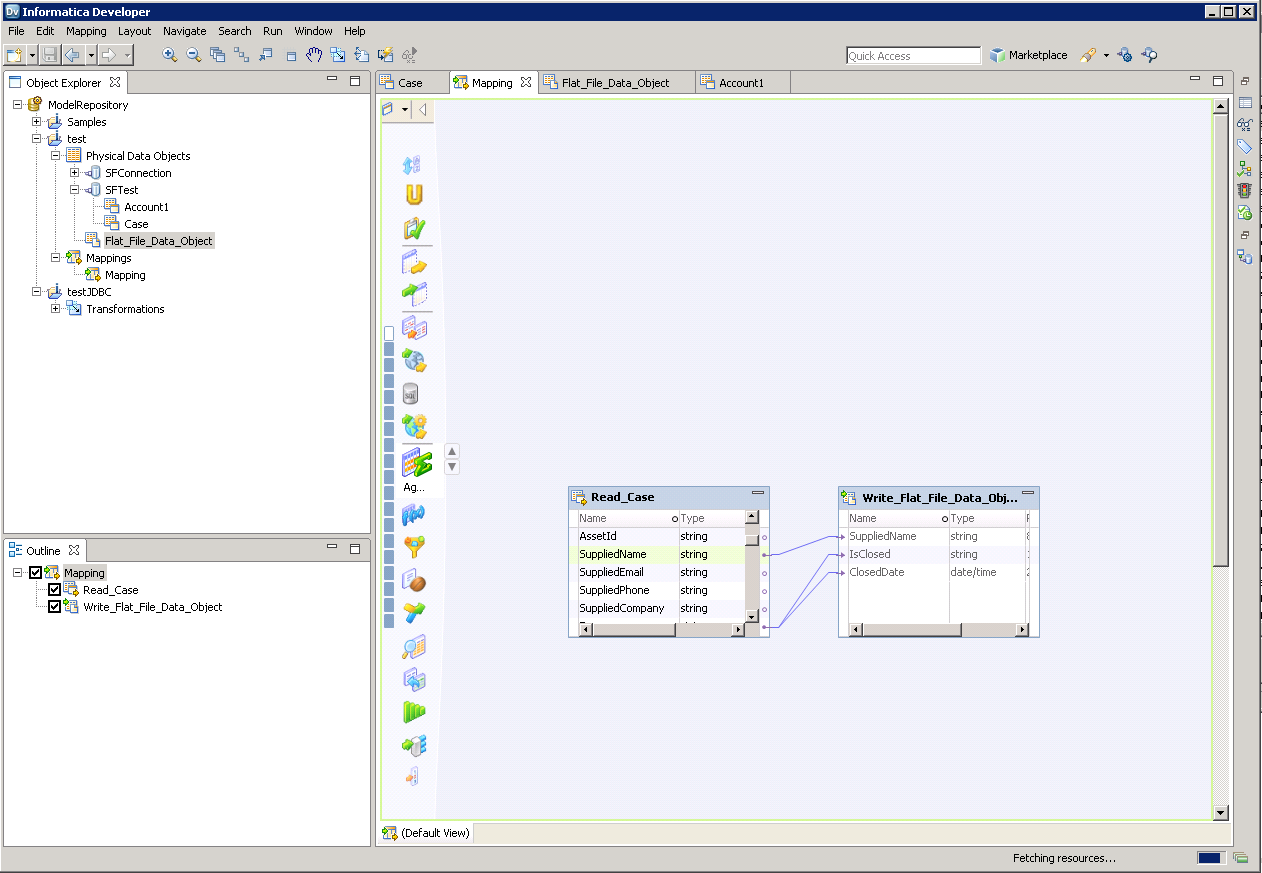Create Informatica Mappings From/To an ODBC Data Source for WooCommerce
Informatica provides a powerful, elegant means of transporting and transforming your data. By utilizing the CData ODBC Driver for WooCommerce, you are gaining access to a driver based on industry-proven standards that integrates seamlessly with Informatica's powerful data transportation and manipulation features. This tutorial shows how to transfer and browse WooCommerce data in Informatica PowerCenter.
Connect to WooCommerce as an ODBC Data Source
Information for connecting to WooCommerce follows, along with different instructions for configuring a DSN in Windows and Linux environments.
WooCommerce supports the following authentication methods: one-legged OAuth1.0 Authentication and standard OAuth2.0 Authentication.
Connecting using one-legged OAuth 1.0 Authentication
Specify the following properties (NOTE: the below credentials are generated from WooCommerce settings page and should not be confused with the credentials generated by using WordPress OAuth2.0 plugin):
- ConsumerKey
- ConsumerSecret
Connecting using WordPress OAuth 2.0 Authentication
After having configured the [ plugin, you may connect to WooCommerce by providing the following connection properties:
]
- OAuthClientId
- OAuthClientSecret
- CallbackURL
- InitiateOAuth - Set this to either GETANDREFRESH or REFRESH
In either case, you will need to set the Url property to the URL of the WooCommerce instance.
Windows
If you have not already, first specify connection properties in an ODBC DSN (data source name). This is the last step of the driver installation. You can use the Microsoft ODBC Data Source Administrator to create and configure ODBC DSNs.
Linux
If you are installing the CData ODBC Driver for WooCommerce in a Linux environment, the driver installation predefines a system DSN. You can modify the DSN by editing the system data sources file (/etc/odbc.ini) and defining the required connection properties.
/etc/odbc.ini
[CData WooCommerce Source]
Driver = CData ODBC Driver for WooCommerce
Description = My Description
Url = https://example.com/
ConsumerKey = ck_ec52c76185c088ecaa3145287c8acba55a6f59ad
ConsumerSecret = cs_9fde14bf57126156701a7563fc87575713c355e5
For specific information on using these configuration files, please refer to the help documentation (installed and found online).
Create a Linked Table to Orders Data
Follow the steps below to create a linked table, which enables you to access live Orders data.
Create the ODBC Connection
Follow the steps below to connect to WooCommerce in Informatica PowerCenter:
- In the Informatica Developer tool connect to your repository and create a project.
- In the Connection Explorer pane, right-click and click Create a Connection.
- In the New Database Connection wizard that is displayed, enter a name and Id for the connection and in the Type menu select ODBC.
- In the Connection String property, enter the DSN.
NOTE: If you are working in a Linux operating system, set the Driver Manager for Linux property to unixODBC 2.3.x.
Create the WooCommerce Data Object
After you have created an ODBC connection to WooCommerce, you can now access WooCommerce entities in Informatica. Follow the steps below to add Orders entities to your project.
- In the Object Explorer, right-click your project and then click New -> Data Object.
- In the wizard that is displayed, select the Relational Data Object option.
- Click the Browse button next to the Connection box and select the ODBC connection you created in the previous step.
- Select the option to create a data object from an existing resource and click the Browse button next to the Resource box.
- In the dialog that is displayed, clear the Show Default Schema Only option and expand the node for the ODBC connection. Select the entity that you want.
![The driver models WooCommerce entities as relational tables. (Salesforce is shown.)]()
You can now browse the table in the Data Viewer: Right-click the node for the table and then click Open. On the Data Viewer view, click Run.
![Table data and metadata in the Data Viewer. (Salesforce is shown.)]()
Create the Mapping
Follow the steps below to add the WooCommerce source to a mapping:
- In the Object Explorer, right-click your project and then click New -> Mapping.
- Expand the node for the WooCommerce connection and then drag the data object for the table onto the editor.
- In the dialog that appears, select the Read option.
![The source WooCommerce table in the mapping. (Salesforce is shown.)]()
Follow the steps below to map WooCommerce columns to a flat file:
- In the Object Explorer, right-click your project and then click New -> Data Object.
- Select Flat File Data Object -> Create as Empty -> Fixed Width.
- In the properties for the WooCommerce object, select the rows you want, right-click, and then click copy. Paste the rows into the flat file properties.
- Drag the flat file data object onto the mapping. In the dialog that appears, select the Write option.
- Click and drag to connect columns.
To transfer WooCommerce data, right-click in the workspace and then click Run Mapping.
![The completed mapping. (Salesforce is shown.)]()










